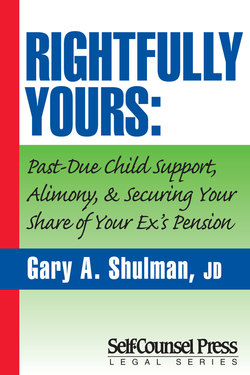Читать книгу Rightfully Yours - Gary A. Shulman - Страница 48
На сайте Литреса книга снята с продажи.
3. Problems in Discovery
ОглавлениеProviding the plan administrator with a reasonable amount of time to reply to your (or your attorney’s) written requests for information and to review your QDRO will help with your relationship. Your attorney should be very cautious with his or her discovery approach. His or her requests for information may frequently be construed in a way that gives an unfair advantage to your ex-husband. Plan administrators have an uncanny ability to mold their answers to fit your questions. In other words, it’s not what they say that can hurt you, it’s what they don’t say. Here are a series of examples that should aid you in understanding the need to exercise due diligence in the discovery process:
• The plan administrator is requested to identify the participant’s current balance in the company savings plan. You are told that the participant has $4,000 in the plan. Unknown to you and your client, the participant took a $14,000 loan just days earlier.
• An auto worker’s plan administrator is asked to calculate the participant’s accrued benefit under the defined benefit pension plan. You and your attorney are told that he has accrued a pension of $957 a month. However, no one tells you that in one year, at age 49, he can retire at $990 a month for life, with an additional $1,050 monthly pension supplement until he reaches age 62.
• The administrator is asked to reveal all pension plans under which the participant is currently covered. Based on your attorney’s discovery letter, you are informed that he is covered under a defined benefit plan that will pay $645 a month at age 65. The company does not reveal that he has a 401(k) savings plan with a balance of $23,000. Remember, your attorney only inquired about the “pension plan” and not about the savings plan.
• The plan administrator at the electrical workers “local 99” pension fund is asked to calculate the participant’s accrued benefit. However, no one reveals that the participant is also covered by the electrical workers “national” pension fund as well. This means that he is covered under two separate defined benefit pension plans at the same time. He’s covered under the local union pension plan and the national union pension plan.
• The company is requested to calculate a participant’s accrued benefit. The written response indicates that no benefit is available because the participant has only been employed for four years. He has not yet satisfied the plan’s vesting requirement. However, the participant has already worked there for four years and has started to accrue a pension, half of which may be marital. They don’t tell you that he needs only one more year of service to become 100 percent vested in his accrued pension benefit. It is also well-settled law nowadays that a nonvested pension benefit does have value at divorce and should be considered when equitably dividing the marital portion of the pension benefits.
